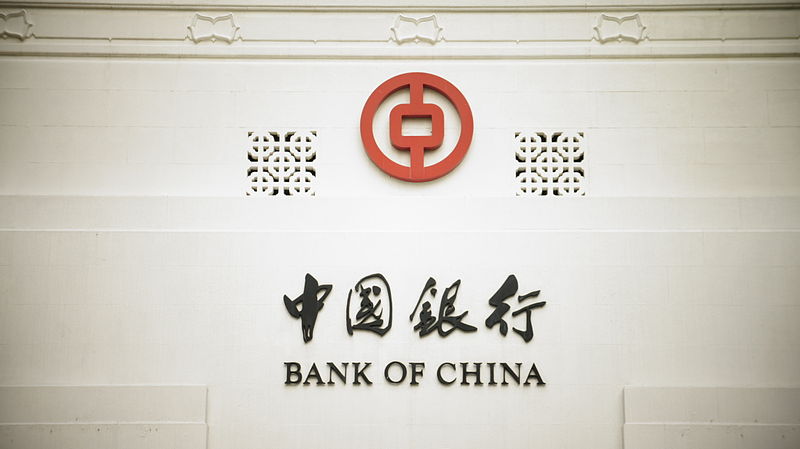BIS considers the so-called credit to GDP gap one of the most reliable indicators of future banking crises. In China, its rate has already reached record levels. The credit to GDP gap is the difference between the loan-to-GDP ratio and average of this ratio for the prior periods. In case this rate exceeds 10%, the banking system of a country may face a crisis at any time over the next three years, according to BIS. According to the organization’s latest quarterly report, the credit to GDP gap indicator in China is 30.1%.
China is leading by a wide margin. For example, Canada’s gap is much lower - 12%.
The bank notes that in two thirds of cases when the credit to GDP gap was more than 10%, the banking system encountered problems within three years.
The Chinese indicator for the first time exceeded the "dangerous" 10% in 2009, but the crisis has not yet affected the country’s banking sector. As the Financial Times notes, the crisis can be restrained by the fact that volume of loans issued in foreign currency by Chinese banks remains quite low.
BIS says that credit debt in China amounted to 255% of GDP ($ 27.2 trillion) at the end of the first quarter of 2016. Thus, the percentage data rate in China is lower than in Japan (394%), UK (271%) and the average for the euro area (271%). However, economists are concerned about the pace at which China is growing in this figure: it was just 147% in 2008. Previously, Goldman Sachs in its report on this issue pointed out that "any large country, where the volume of loans is rapidly growing, faces a financial crisis or prolonged slowdown in GDP growth."
According to IMF estimates, Chinese banks issued about $ 1.3 trillion of loans to companies that did not have necessary cash flow. Volume of loans granted to the Chinese corporate sector is 171% of GDP.
The Chinese authorities are also aware of the danger of the corporate sector’s growing debt load. In late 2015, Chinese Premier Li Keqiang spoke about necessity to to do away with so-called "zombie companies" (i.e., to stop supporting companies who chronically suffer losses).
Many authoritative experts and investors, including billionaire George Soros, hinted at the risk of debt growth in China. According to Soros, majority of loans issued in China is spent on supporting unprofitable enterprises, and covering bad debts. At the same time, the excess lending makes the model of economic growth very similar to what happened in the US in 2007-2008 on the eve of the financial crisis.
As noted by Bloomberg, the Chinese government seems to have found a way to put credit expansion under the control and not jeopardizing the real economy’s growth. In recent years, there has been a tendency to shift the focus from the corporate sector to the household. In August 2016, volume of loans issued by Chinese banks to households grew by 21% compared with a year earlier. At that, volume of loans to the corporate sector grew only 10%, Bloomberg writes.
source: ft.com, bloomberg.com
China is leading by a wide margin. For example, Canada’s gap is much lower - 12%.
The bank notes that in two thirds of cases when the credit to GDP gap was more than 10%, the banking system encountered problems within three years.
The Chinese indicator for the first time exceeded the "dangerous" 10% in 2009, but the crisis has not yet affected the country’s banking sector. As the Financial Times notes, the crisis can be restrained by the fact that volume of loans issued in foreign currency by Chinese banks remains quite low.
BIS says that credit debt in China amounted to 255% of GDP ($ 27.2 trillion) at the end of the first quarter of 2016. Thus, the percentage data rate in China is lower than in Japan (394%), UK (271%) and the average for the euro area (271%). However, economists are concerned about the pace at which China is growing in this figure: it was just 147% in 2008. Previously, Goldman Sachs in its report on this issue pointed out that "any large country, where the volume of loans is rapidly growing, faces a financial crisis or prolonged slowdown in GDP growth."
According to IMF estimates, Chinese banks issued about $ 1.3 trillion of loans to companies that did not have necessary cash flow. Volume of loans granted to the Chinese corporate sector is 171% of GDP.
The Chinese authorities are also aware of the danger of the corporate sector’s growing debt load. In late 2015, Chinese Premier Li Keqiang spoke about necessity to to do away with so-called "zombie companies" (i.e., to stop supporting companies who chronically suffer losses).
Many authoritative experts and investors, including billionaire George Soros, hinted at the risk of debt growth in China. According to Soros, majority of loans issued in China is spent on supporting unprofitable enterprises, and covering bad debts. At the same time, the excess lending makes the model of economic growth very similar to what happened in the US in 2007-2008 on the eve of the financial crisis.
As noted by Bloomberg, the Chinese government seems to have found a way to put credit expansion under the control and not jeopardizing the real economy’s growth. In recent years, there has been a tendency to shift the focus from the corporate sector to the household. In August 2016, volume of loans issued by Chinese banks to households grew by 21% compared with a year earlier. At that, volume of loans to the corporate sector grew only 10%, Bloomberg writes.
source: ft.com, bloomberg.com





